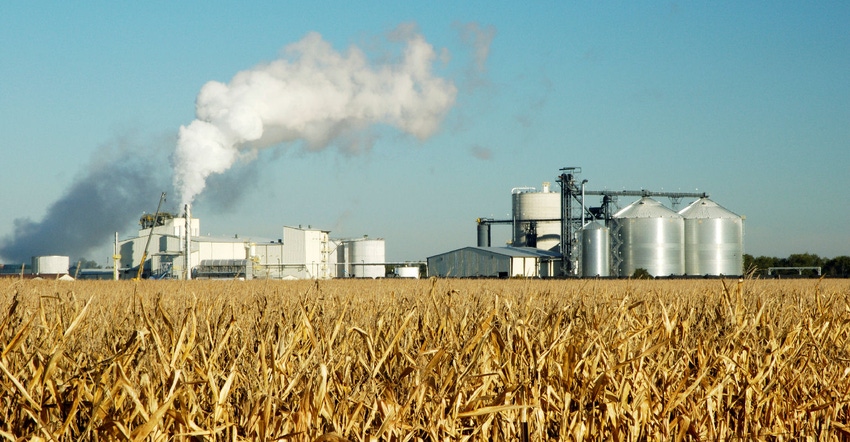Doomsday outcomes threatened by opponents of RFS2 simply have not materialized.
December 19, 2017

Ten years ago, on Dec. 19, 2007, President George W. Bush signed into law the Energy Independence & Security Act, which greatly expanded the scope and impact of the Renewable Fuel Standard (RFS). In the decade since passage, significant progress has been made towards greater energy security, cleaner air and boosting local economies, according to a new analysis by the Renewable Fuels Assn., “The RFS2: Then & Now.”
The RFS requires oil companies to blend increasing volumes of renewable fuels with gasoline and diesel, culminating with 36 billion gal. in 2022.
“A decade after the RFS2 was adopted, tremendous progress has been made toward achieving the objectives of this landmark policy,” according to the analysis, which compares key data points from 2007 to 2017.
“Greenhouse gas emissions and harmful tailpipe pollution from the transportation sector have fallen. The value of agricultural products and farm income have been buoyed, and communities across the country have benefited from the job creation, increased tax revenue and heightened household income that stem from the construction and operation of a biorefinery,” the analysis adds.
The analysis notes that the number of operational U.S. ethanol plants has nearly doubled -- from 110 in 2007 to 211 in 2017, a 92% increase -- while U.S. ethanol production has grown 143% from 6.5 billion gal. in 2007 to 15.8 billion gal. in 2017.
U.S. ethanol industry jobs grew 42% from 238,541 in 2007 to 339,176 in 2017, with the value of industry output increasing 74% -- from $17.8 billion to $31 billion -- over that time period.
The production of advanced and cellulosic biofuel increased 469%, from 490 million gal. in 2007 to 2.79 billion gal. in 2017.
The RFS also has encouraged increase corn production. U.S. corn production grew 12%, from 13 billion bu. in 2007 to 14.6 billion bu. in 2017, while corn acres planted fell 3%, from 93.5 million acres in 2007 to 90.4 million acres in 2017, and average corn yields increased 16%, from 150.7 bu. per acre in 2007 to 175.4 bu. per acre in 2017.
The number of retail stations offering flexible fuels like E85 increased 238%, rising from 1,208 stations in 2007 to 4,077 in 2017, while the number of flex-fuel vehicles on the road grew from 6.7 million in 2007 to 24.5 million in 2017 -- a 266% increase.
The greenhouse gas emissions avoided from using ethanol has increased 291% from 12.7 million tons of carbon dioxide equivalent (CO2e) in 2007 to 49.6 million tons CO2e in 2017. The greenhouse gas emissions from agricultural soil management, urea fertilization and liming fell 7%, from 278.7 million metric tons CO2e in 2007 to 260.1 million metric tons CO2e in 2017.
Meanwhile, the doomsday outcomes threatened by RFS opponents have simply not materialized, the analysis notes.
U.S. cropland area fell 7%, from 402 million acres in 2007 to 376 million acres in 2017, while U.S. grassland area has increased 5%, from 1.296 million to 1.359 million square miles. The deforestation rate in the Amazon dropped from 4,498 square miles in 2007 to 2,558 square miles in 2017, a 43% decline.
Overall food inflation was 4% in 2007 but just 1% in 2017. In addition, the analysis notes that prices for red meat, poultry, fish, cereals and bakery items and dairy in 2017 were unchanged from the previous year, compared to a 3.8% increase in 2007 from the prior year.
The world supply of coarse grains, wheat and rice increased 31% to 3.23 billion metric tons in 2017, compared to 2.46 billion metric tons in 2007.
“By any measure, RFS2 has been a huge success, bringing about greater consumer choice while helping to make the air cleaner, stimulate economic activity and enhance energy security,” Renewable Fuels Assn. president and chief executive officer Bob Dinneen said. “As this analysis shows, consumers have greatly benefitted from this vital program. These benefits have rippled throughout our economy, and we look forward to even greater success of the RFS for years to come.”
Read the full analysis here.
You May Also Like

.png?width=300&auto=webp&quality=80&disable=upscale)

